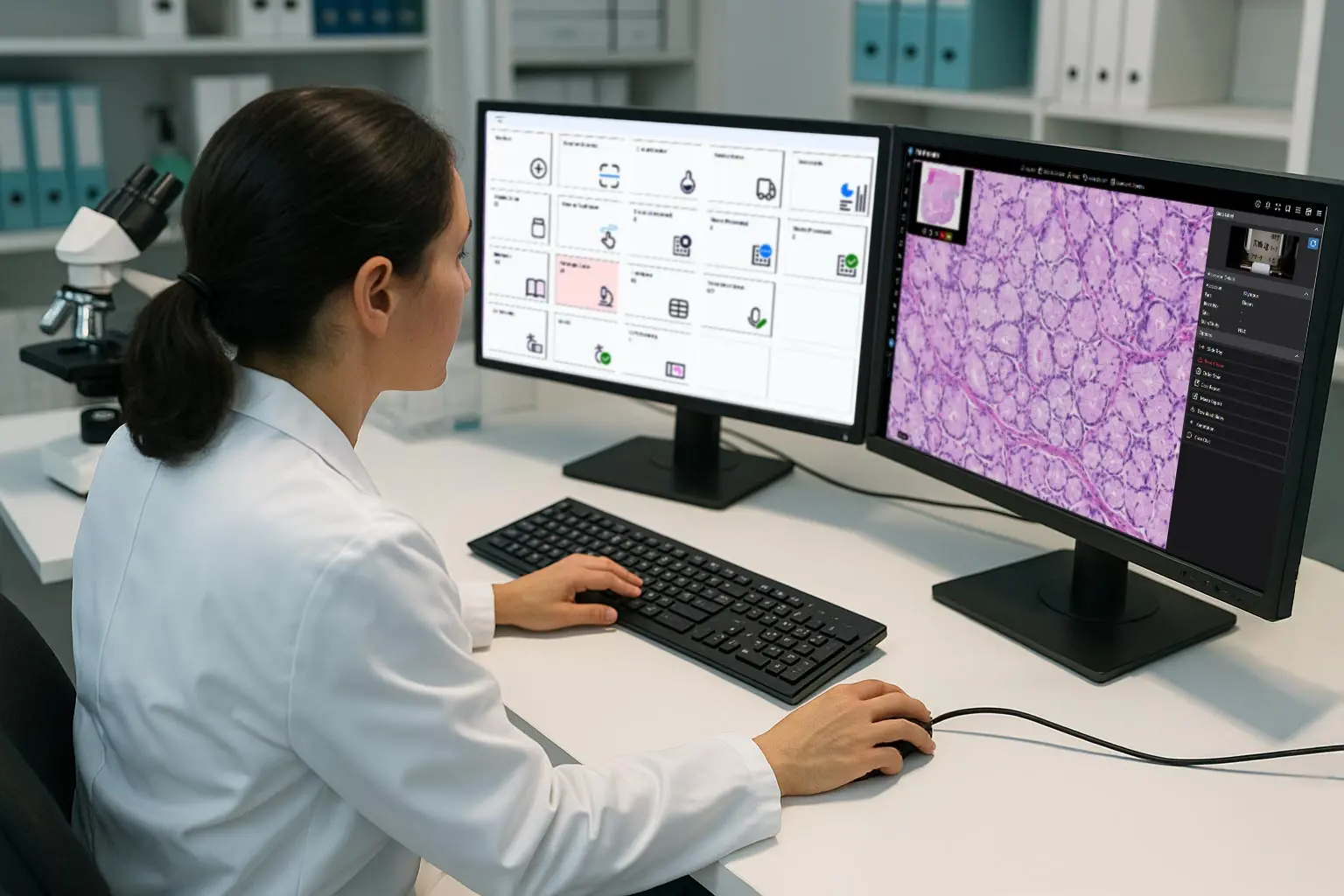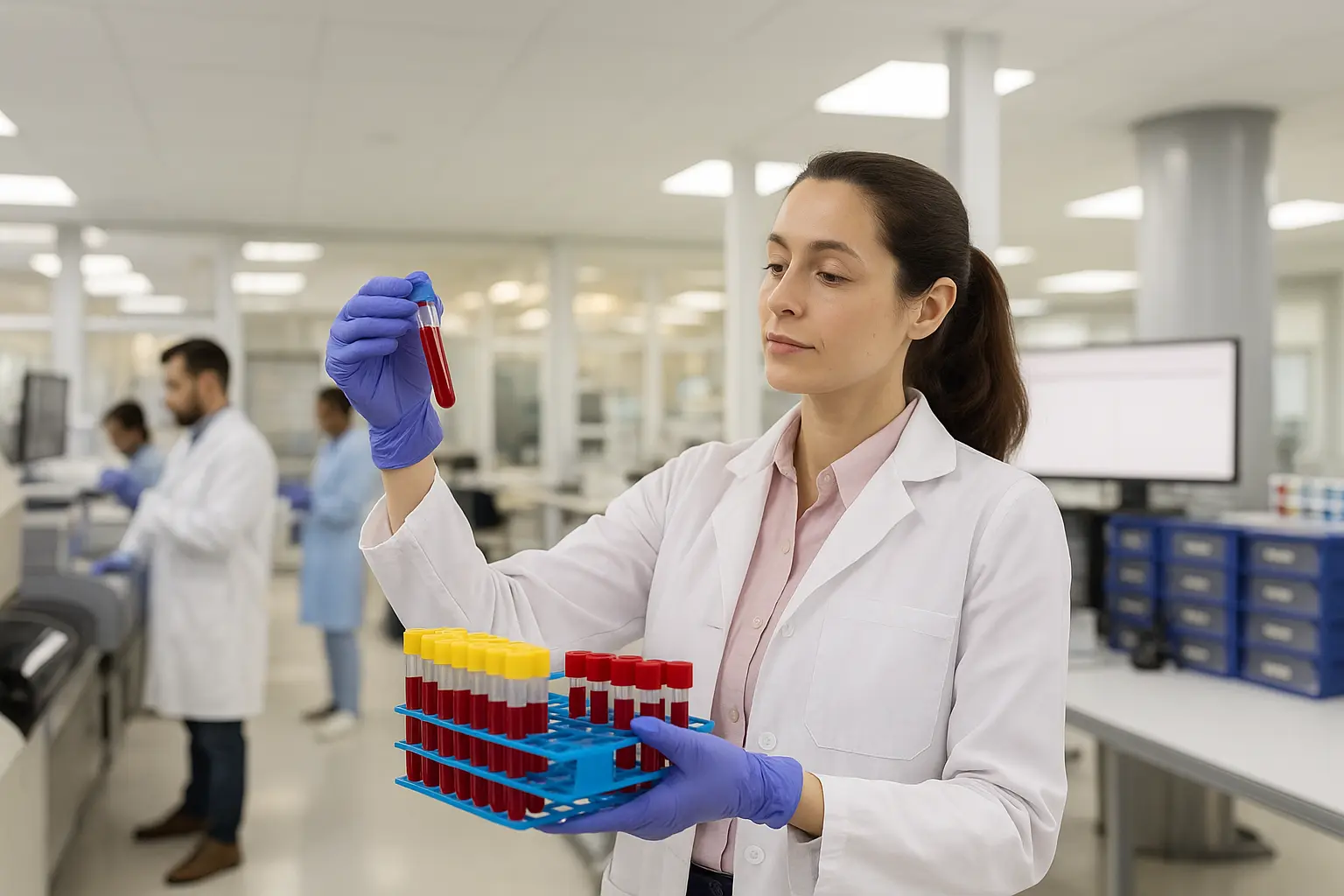Blog
Don’t Upgrade the Past - Invest in the Future with LigoLab’s Proven Strategies for Zero Downtime and Maximum ROI
August 1, 2025
Executive Summary
For diagnostic laboratories, the thought of switching laboratory information systems (LIS software) can raise valid concerns around business interruption, data integrity, staff disruption, and lost revenue. While upgrading your LIS system is often necessary to unlock automation, scalability, and future readiness, the transition must be executed with surgical precision.
This article presents how LigoLab has successfully transitioned over 270+ labs without downtime, through a proven, structured methodology. It details the exact steps, roles, support systems, and technologies LigoLab provides to ensure a seamless cutover. Whether you’re coming from an aging legacy laboratory information system or an incumbent vendor that no longer serves your growth goals, this paper demonstrates how LigoLab mitigates risk and accelerates ROI.
Table of Contents
- Introduction: The High-Stakes Decision of Switching LIS Vendors
- The Cost of Inaction vs. The Fear of Disruption
- LigoLab’s Transition Philosophy
- Step-by-Step Transition Framework
- Data Migration: Accuracy, Safety, and Integrity
- Training and Change Management
- Technical Architecture Designed for Reliability
- Measuring ROI Post-Implementation
- LigoLab’s Structured Approach - Why it Works
- Conclusion: Transition as a Strategic Advantage
1. Introduction: The High-Stakes Decision of Switching LIS Vendors
LIS software is the digital backbone of every modern laboratory. It governs technical and financial operations, specimen tracking, compliance, reporting, automation, and customer service. Choosing to replace your LIS system is not just a technology decision - it’s a business transformation decision. Yet the fear of business disruption often stalls progress, keeping labs on outdated LIS systems and vendors that limit productivity, profitability, and growth, not because they’re the best option, but simply because they’re familiar. It’s a kind of vendor Stockholm syndrome: the longer the relationship drags on, the harder it becomes to leave, even when the costs are obvious
LigoLab is built with this reality in mind, approaching every implementation as a mission-critical project that must succeed the first time.
Industry Insights: What to Consider When Switching a LIS System or Lab LIMS
2. The Cost of Inaction vs. The Fear of Disruption
While the fear of switching LIS software vendors is valid, it often overshadows the greater danger: the cost of inaction. Labs that stick with outdated or poorly supported LIS platforms face:
- Inefficiency from manual processes
- Revenue leakage from lab billing errors
- Compliance risks from inadequate audit trails
- Poor staff morale due to a clunky UX
- Missed opportunities for automation and growth
During the pre-sale phase, LigoLab helps laboratories uncover and quantify hidden costs, enabling leadership to make well-informed decisions. Once the return on investment becomes clear, the conversation shifts to ensuring a smooth and secure transition.
Discover More: Cost of Inaction - The Dire Consequences of Neglecting Modernization in Laboratory Operations and Informatics

3. LigoLab’s Transition Philosophy
The guiding principles behind LigoLab are:
- No Disruption: Zero downtime during the transition.
- Parallel Safety Net: Run in parallel until full confidence is achieved.
- Role-Based Onboarding: Train by department, role, and use case.
- White-Glove Support: On-site and virtual assistance throughout, guaranteeing no gaps in configuration or functionality.
- Iterative Configuration: LIS system setup mirrors your current state, then improves it.
- Partnership Mentality: We don’t “switch you over,” we become your long-term partner.
Discover More: Emphasizing LigoLab’s Commitment to Transparency
4. Step-by-Step Transition Framework
Every lab is different. However, the core framework remains consistent:
Phase 1: Pre-Implementation Assessment
- Business and workflow discovery sessions
- Gap analysis vs. best practices
- Custom configuration plan
Phase 2: System Configuration and Environment Setup
- Secure infrastructure deployment
- LIS modules mapped to existing processes
- Configurable rule engine for automation
Phase 3: Data Migration
- Dry runs and reconciliation
- Source system data mapping
- Audit trails and validation scripts
Phase 4: Training and Superuser Certification
- Role-based training curriculum
- Department champions trained first
- Live sandbox testing
Phase 5: Parallel Testing and Validation
- Live transaction mirroring
- Staff input and feedback loop
- Zero disruption policy enforced
Phase 6: Go-Live Support/Hypercare
- Weekend cutover (if applicable)
- Real-time monitoring and a support team on standby
- Issue escalation protocol
Phase 7: Post-Go-Live Optimization
- KPIs tracked weekly
- Continuous configuration improvements
- Quarterly business reviews
White Paper: Keys to Keeping Your LIS System Implementation on Track
5. Data Migration: Accuracy, Safety, and Integrity
Data is often the most fragile piece of the transition puzzle. LigoLab uses:
- Encrypted and traceable transfers
- Multiple dry runs before final migration
- Validation reports to confirm integrity
- Reconciliation tools for clinical and billing data
This ensures your lab retains access to all historic data with full confidence.
Discover More: Transitioning from CoPath to LigoLab - A Seamless Path to LIS System Modernization
6. Training and Change Management
Technology only works when people use it. That’s why LigoLab invests heavily in:
- Hands-on departmental training
- Role-based simulations in a sandbox
- Pre-built training videos and documentation
- Post-launch retraining sessions as needed
Change management best practices are embedded throughout the process, ensuring high adoption and staff confidence.
Discover More: A Detailed Look at LigoLab’s Support Coverage
7. Technical Architecture Designed for Reliability
LigoLab is built as a highly configurable, cloud-hosted (or on-premises) platform that supports:
- High availability and failover
- HL7/FHIR interfaces with existing EHRs and analyzers
- Real-time data syncing for billing and LIS
- HIPAA, CLIA, and CAP compliance out of the box
System reliability and security are core to ensuring a smooth cutover.
Discover More: Overcoming LIS Integration Challenges - How Advanced Platforms Like LigoLab Simplify the Transition

8. Measuring ROI Post-Implementation
After go-live, LigoLab tracks:
After go-live, the average LigoLab partner laboratory experiences:
- 27% reduction in manual tasks per FTE
- 18% Increase in revenue per case
- Two orders of magnitude in error reduction in lab billing, specimen tracking, and accessioning
- 2-point increase in NPI staff satisfaction scores
- 35% improvement in case turnaround time
These outcomes are benchmarked quarterly and tied back to initial business goals.
Discover More: Four Game-Changing Business Strategies to Improve Laboratory Processes

9. LigoLab’s Structured Approach: Why It Works
Meticulous Pre-Implementation Mapping
LigoLab guarantees no gaps in configuration or functionality by conducting a meticulous mapping of all existing configurations, tools, workflows, rules, and edge cases during the pre-implementation phase. The team works closely with each department to replicate current-state operations while identifying and eliminating inefficiencies.
Through iterative configuration, rigorous validation, and real-time testing in a sandbox environment, LigoLab ensures every feature, integration, and user role is accounted for before going live. This comprehensive approach, combined with parallel run periods and department-level sign-offs, assures the system’s performance as expected from day one, with no disruption to clinical, operational, or financial workflows.
Phased Departmental Implementation for Maximum Control and Confidence
Optionally, LigoLab offers a phased implementation model that brings each department live in a controlled, stepwise manner. This approach minimizes operational risk and maximizes staff confidence, especially for labs with multiple specialties such as histology, cytology, molecular, toxicology, or microbiology.
By starting with one or two departments, such as GYN cytology and molecular, the implementation team establishes early momentum while giving the testing organization time to adjust. These initial go-lives allow for the validation of system performance, data integrity, and user adoption within a smaller, contained workflow. Most importantly, they help build employee morale by proving that the system works well and delivers real value to their daily work. Once stabilized, the team builds on that foundation by onboarding additional departments while optimizing by utilizing feedback and lessons learned.
Each phase includes its role-based training sessions, configuration validations, and go-live checkpoints. Departments not yet transitioned continue to operate on the legacy LIS system in parallel, ensuring no disruption. This modular rollout also allows lab leadership to prioritize departments based on business needs, staffing readiness, or areas of greatest ROI, creating a flexible path to full transformation - on your terms, with full control.
A Proven Track Record: 100% Implementation Success Since 2006
Since LigoLab’s inception in 2006, there has never been a need to roll back a single implementation to a previous LIS. Every go-live, regardless of lab size, complexity, or specialty, has been successful. This is not by chance; it’s the result of a time-tested, disciplined approach that combines robust planning, agile configuration, and white-glove support at every stage.
While any transition can come with a learning curve, LigoLab has designed a post-go-live phase, called HyperCare, to absorb that curve and turn it into a rapid optimization period.
During HyperCare, a dedicated response team is assigned to your lab to monitor all activity in real time, triage and resolve issues immediately, and fine-tune configurations as staff provide feedback. This team is composed of senior implementation leads, product specialists, and, if needed, they escalate directly to LigoLab’s engineering team for fast-track resolution.
Support during HyperCare is not reactive - it’s proactive. The support team often identifies and resolves friction points before your team even reports them. In parallel, the support team monitors KPIs daily and conducts frequent check-ins to ensure all stakeholders, from lab techs to administrators and pathologists, are comfortable, confident, and fully operational.
This level of intensity during the first 1–2 weeks not only prevents disruption but also builds internal momentum and trust in the new LIS system. It’s one of the key reasons why labs that go live with LigoLab stay with LigoLab and scale over time.
White Paper: Best Practices Guide - Managing LIS System Timelines for Vendor Research and Implementation
10. Conclusion: Transition as a Strategic Advantage
When faced with the need to modernize, many labs choose the path of least resistance, sticking with their existing lab vendor’s “new version” under the illusion that it will be smoother or safer. But more often than not, this is just a repackaged version of the same limitations that have held them back for years. Familiarity isn’t the same as innovation.
Upgrading within the same outdated ecosystem rarely delivers the transformation labs truly need. Real progress requires stepping outside the comfort zone and choosing a partner that’s purpose-built for the challenges of modern diagnostics. LigoLab isn’t just a new version, it’s a new standard.
With the right partner and the right process, a smooth transition is not only possible but also transformative. LigoLab has guided hundreds of labs through this journey without downtime, and it's ready to do the same for yours.
LigoLab turns transition fears into a competitive edge.
Unlock Your Lab’s Full Potential - Get Started with a Personalized Demo!







